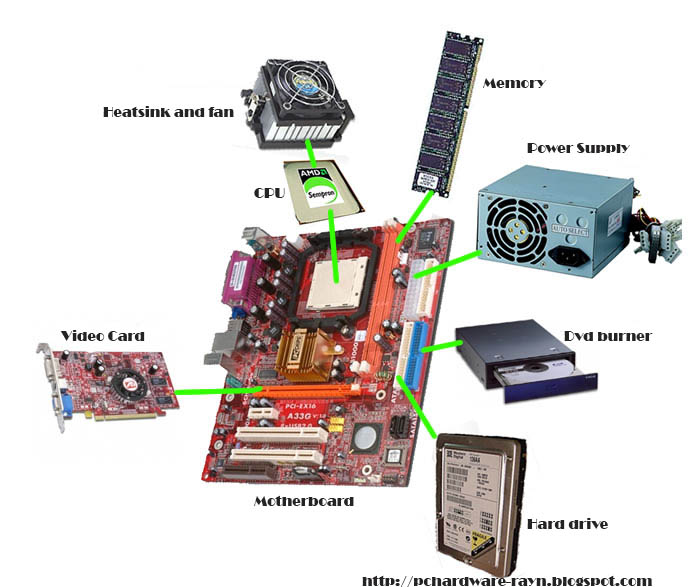The Gems of Surplus Gadget Components
In the current quickly developing tech landscape, surplus stock computer parts have become as hidden treasures for savvy shoppers and tech enthusiasts equally. Whether you are a veteran builder or simply looking to upgrade your existing setup, knowing where to locate quality surplus components can help you save you a considerable amount of money while still meeting your performance needs. With the appropriate knowledge and a keen eye, you can spot fantastic deals on everything from mother board units and graphics cards to memory and power supplies.
However, navigating the surplus computer parts industry can be tricky. With a overwhelming array of options and potential challenges, it's important to be informed about what to look for to make sure you are taking wise investments. This resource will give you with crucial insights and actionable tips to help you shop confidently, identify high-quality components, and maximize your surplus purchases. Whether assembling a budget gaming rig or upgrading a workstation, understanding the valuable finds of the surplus market can enhance your tech experience.
Purchasing Leftover Computer Parts: Key Considerations
When navigating the realm of surplus computer parts, it is important to prioritize the state and operability of the parts. In numerous cases, leftover components have been removed or upgraded due to modern technology, and assessing their operational status is vital. Look for vendors who offer guarantees or refund policies, as these protections can help ensure that you do not end up with malfunctioning components. Be prepared to ask questions about the provenance of the components, including their past usage and their repair records.
Another vital factor is integration. Leftover components may change greatly in technology and standards, which can lead to issues when building a configuration. Before acquiring, double-check that the items you mean to buy will work together seamlessly. This includes checking chipset integration for mainboards, ensuring the PSU can handle the items, and confirming that any pre-owned GPUs or processors work with your logic board. Taking the care to verify these points can save you from potential issues later on.

To wrap up, it is important to assess the trustworthiness of the vendor. Reputable suppliers or sellers will often offer detailed details about the surplus parts they sell. Look for customer reviews, marks, and any endorsements that might reassure you of the standard of their goods. Additionally, you should be wary of sales that seem too advantageous to be realistic, as these can sometimes signal counterfeit or faulty products. Conducting investigations and shopping from reliable sources will greatly improve your odds of scoring top-notch surplus PC parts.
Recognizing Authenticity: Identifying Authentic Excess Parts
When shopping for surplus computer components, making sure you are purchasing genuine components is important. One of the simplest methods to verify genuineness is to check reputable brands. Well-known manufacturers typically have better quality control systems. Search for branding on the component on it, and compare model numbers online to ensure legitimacy. Stay cautious of components that do not have branding or have questionably generic labels, as these may be fraudulent or inferior products.
An additional aspect to think about is the physical condition of the parts. Inspect for any signs of wear, damage, or tampering. Authentic components will generally show minor wear and tear, while fake products could have subpar finishes or inaccurate markings. Additionally, look at any connectors or solder joints for proper quality. Top-notch components will have clean, even connections without manufacturing defects. If you can, obtain a warranty or guarantee from the seller, as this can also indicate a measure of confidence in the product's authenticity.
Lastly, researching the seller is crucial to finding authentic surplus components. Look at reviews, ratings, and any feedback about their previous sales. A trustworthy seller should have a reputation for satisfied customers and a open return policy. Consult other buyers who have purchased from that seller, and do not hesitate to ask questions about the sourcing of their surplus parts. Doing your due diligence in vetting your seller will help you secure authentic components that are worthy of your investment.
Maximizing Worth: Best Practices for Purchasing Excess Items
When venturing into the realm of excess PC items, performing thorough research is important. Start by acquainting yourself with the specific parts you want and their resale worth. This knowledge empowers you to make smart judgments and identify a good deal when you find one. Looking into online ratings and forums can help you locate reputable sellers while also providing perspectives into common issues associated with specific parts.
Next, thoroughly inspect the state of the surplus parts before making a buy. Whether you're looking at a second-hand circuit board or a surplus graphics adapter, look for physical signs of deterioration. Defects, damaged contacts, or heavy dirt can indicate poor maintenance or potential issues. Feel free to ask suppliers about the track record of the items, such as their previous usage and reason for disposal. This clarity will help you judge the reliability of the parts.
Lastly, ensure cohesion with your existing system when selecting surplus parts. Check find here like processor socket for CPUs or memory compatibility to avoid financial blunders. Utilizing online applications to check fit can ease this process. By implementing these optimal practices, you increase your chances of finding high-quality excess computer components that provide excellent worth without the risk of buyer's remorse.